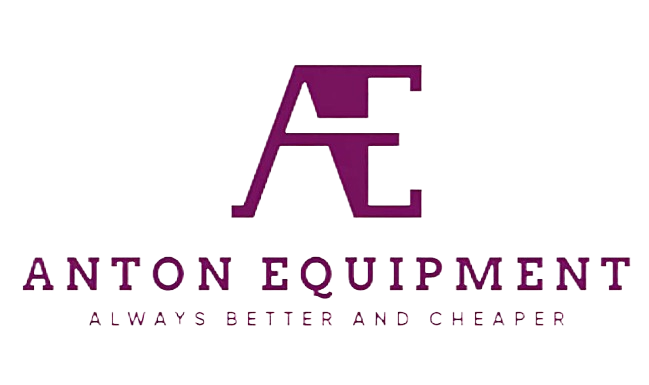News
How to Choose the Right Excavator Attachment for Heavy-Duty Tasks
Understanding Heavy-Duty Tasks and Attachment Requirements
Defining Heavy-Duty Applications in Construction
Heavy-duty applications in construction often entail intense tasks such as demolition, excavation, and material handling, necessitating robust machinery and attachments. These activities are vital for large-scale construction projects, including infrastructure development like highways and railroads, as well as in mining operations. Such projects demand specialized equipment that can withstand extreme conditions and deliver optimal performance. For instance, excavator hydraulic breakers are integral in breaking up concrete, while earth augers efficiently handle earth-moving tasks, showcasing their importance in construction scenarios. Recognizing the demands of these heavy-duty applications is crucial for selecting the right attachments to ensure efficiency and durability.
Why Attachment Choice Impacts Efficiency and Safety
Choosing the correct attachment is not merely about enhancing operational efficiency; it is pivotal in assuring job site safety by minimizing accident risks. An appropriate attachment helps maintain stability and control during operations, reducing the possibility of equipment failure. Statistics reveal that poor attachment choice can elevate the risk of mechanical issues, contribute to back injuries, and lead to operational downtime, which underscores the necessity of a meticulous selection process. Evaluating the performance specifications of skid steer and mini excavator attachments, for example, is essential to ensure they are suited for their intended tasks, contributing to a safer and more efficient working environment.
Best Excavator Attachments for Heavy-Duty Tasks
Excavator Hydraulic Breakers: Demolition Powerhouses
Excavator hydraulic breakers are indispensable for demolition tasks, offering the raw power needed to effectively break through concrete and rock. These robust attachments provide significant force, making them ideal for large-scale demolition projects that require efficient material breakdown. When selecting a hydraulic breaker, it's crucial to consider the energy class, which should be matched to the specific challenges and materials of the demolition site. This choice directly influences productivity by ensuring the right amount of force is applied, thereby optimizing operational costs and minimizing equipment wear.
Earth Augers for Precision Drilling in Tough Soil
Earth augers are specialized for precision drilling, essential for landscaping and construction projects where accurate hole placement is paramount. Capable of boring into tough soil conditions, these versatile attachments are indispensable for projects requiring deep and precise drilling. The reliable design of earth augers ensures they efficiently handle difficult terrains, offering a practical solution for various applications, from setting fence posts to planting trees, where both precision and depth are required.
Heavy-Duty Buckets: Versatility for Rock and Debris
Heavy-duty buckets offer a range of sizes and designs tailored to efficiently handle different types of materials, from loose soil to dense rocks and debris. This versatility makes them essential for heavy-duty tasks where material handling varies drastically. Choosing the appropriate bucket type can greatly enhance productivity, reducing the time and effort required to maneuver and transport materials. By optimizing the load capacity and design, these buckets allow operators to accomplish tasks more swiftly, promoting efficient workflow on the construction site.
Rippers and Frost Teeth for Hardened Surfaces
Rippers and frost teeth attachments are vital for breaking through compacted soil and frost, particularly in colder climates where ground surfaces can be particularly challenging. These tools enable efficient land preparation and site clearing, even under arduous conditions. Designed to penetrate and disrupt hardened surfaces, rippers and frost teeth attachments facilitate smoother and more precise work, ensuring that land development proceeds with minimal obstruction and maximum effectiveness, regardless of the environmental challenges faced.
Key Factors When Selecting Attachments
Material Compatibility: Matching Attachments to Job Demands
Understanding the material compatibility of attachments is crucial for optimal performance. When selecting an attachment, it's essential to consider the type of material it will be used with, as compatibility influences both its wear and effectiveness. For instance, using a skid steer attachment designed for soft soil on rocky terrain could result in accelerated wear and suboptimal performance. The wrong attachment can lead to premature wear and potential damage to both the attachment and the machine, ultimately increasing operational costs. Thus, ensuring material compatibility is a key step towards efficient and cost-effective operation.
Excavator Size and Hydraulic System Limits (Mini vs. Standard)
Choosing attachments based on the excavator's size and hydraulic system capacity is imperative for efficient performance. The compatibility between an excavator's size and the selected attachment ensures optimal functionality. For example, fitting a large earth auger on a mini excavator could overwhelm its hydraulic system, leading to decreased efficiency and possible equipment damage. To avoid such issues, thorough compatibility checks are necessary, focusing on both the physical dimensions and the hydraulic capacity of the attachment in relation to the excavator. This step is essential for maintaining operational efficiency and equipment longevity.
Durability and Wear Resistance for Long-Term Use
Durability and wear resistance are critical considerations when selecting heavy-duty attachments for long-term use. These attachments face rigorous demands that can lead to wear and tear if they are not made from robust materials. Opting for attachments constructed from high-quality materials and reinforced designs can significantly prolong their lifespan even under challenging conditions. Such durability not only ensures reliability during tough jobs but also reduces replacement frequency and maintenance costs, resulting in better overall investment in excavation and construction projects.
Compatibility with Skid Steer and Mini Excavators
Adapting Attachments for Compact Machinery
When working in confined spaces, the right attachment can transform a skid steer or mini excavator into an incredibly versatile tool. These machines, known for their compact dimensions, are designed to navigate tight areas, but their true utility stems from the versatility of their attachments. With the ability to adapt various attachments, these machines can handle different tasks, from digging to grading, maximizing their value on job sites. The flexibility of using attachments such as standard buckets, earth augers, and hydraulic breakers allows operators to tackle a wide array of challenges, making these compact powerhouses indispensable in construction and landscaping sectors.
Quick-Coupler Systems for Seamless Transitions
Quick-coupler systems are a game-changer for enhancing productivity on job sites involving skid steers and mini excavators. These systems facilitate the rapid exchange of attachments, allowing for seamless tool transitions tailored to specific tasks. By minimizing downtime associated with manual attachment changes, operators can swiftly adapt to different job requirements, whether it's moving from a bucket to an earth auger or switching to an excavator hydraulic breaker. The efficiency gained through these systems significantly boosts operational effectiveness, making them a worthwhile investment for businesses seeking to optimize their machinery's performance.
Maintenance and Safety Best Practices
Routine Inspections for Wear and Tear
Regular inspections are crucial in maintaining the reliability and effectiveness of machinery attachments. By identifying signs of wear and tear early, operators can prevent catastrophic failures that could potentially halt operations and lead to costly repairs. Establishing a routine inspection schedule is key. This includes meticulous checks of wear points such as joints, fasteners, and moving components and ensuring that all safety features, including locks and guards, are fully functional. Even minor damages or malfunctions, if not addressed promptly, can escalate, causing safety hazards and equipment downtime.
Lubrication and Storage to Extend Lifespan
Proper lubrication is vital for extending the lifespan of attachments, as it minimizes friction that contributes significantly to wear. Regular application of high-quality lubricants ensures that all moving parts operate smoothly and helps in dissipating heat better, thus preventing premature wear. Moreover, appropriate storage solutions play a significant role in preserving attachments. Keeping them in a well-sheltered and dry environment protects against rust and other environmental damage, ensuring maintained performance and operational efficiency.
Operator Safety Protocols for Heavy-Duty Attachments
Implementing stringent safety protocols is non-negotiable when dealing with heavy-duty attachments, crucial for preventing accidents and ensuring secure operations. Proper training for operators is a foundational step, emphasizing the importance of safe practices and the correct application of attachments. This training reduces the risks of mishandling and misuse. Moreover, regular safety drills and updates on the latest safety measures can significantly decrease the likelihood of workplace incidents, fostering a culture of safety and vigilance among the workforce.












































